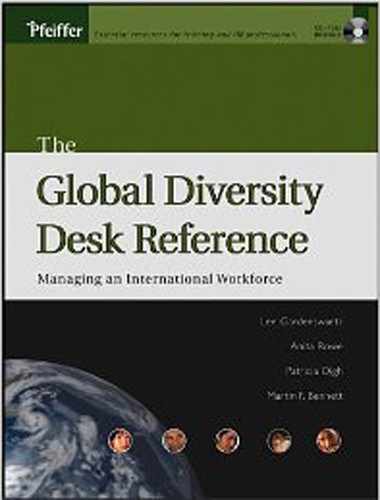7.7. SUMMARY
With the rapid expansion of companies in the late twentieth century, worldwide organizations developed quickly but without sufficient consideration for inclusivity of others' cultures, behaviors, and thoughts. Corporations felt that their strong homegrown corporate culture would be sufficient to address hiring, training and development, and compensation worldwide. During the past fifteen years, many companies have experienced the downside of this assumption. What remains unclear is the degree of loss in staff, market position, and profitability when a company fails to reconcile the thoughts, structure, behavior, and systems of the workforces of other nations and civilizations. The twenty-first century may tell a different story if we begin to allow reverse diversification to occur. We can all learn from the vast array of business expertise and insight contained in the distinctive styles of our global workforce. Most global corporate systems will have to be redefined to accomplish that goal.
This chapter has provided a review of a few of the systems that affect global diversity. By beginning with these systems modifications, global diversity practitioners can begin the process of change.
7.7.1. Notes
[] Friedman, T.L. The Lexus and the Olive Tree (New York: Farrar, Straus and Giroux, 1999).
[] Fears, D. "Diverse and Divided—Black Community as Foreign-Born Population Grows, Nationality Trumps Skin Color," Washington Post, February 24, 2002, p. A01.
[] Wagne, C.G. "Transmigrants: Living in Multiple Cultures," Futurist, 2000, V18, N34, p. 5. www.meridianglobal.com
